Music Matters LP Reissues
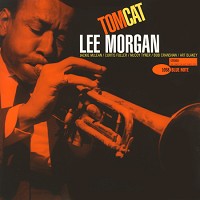
Music Matters (Blue Note) LPs
Lee Morgan - Tom Cat - AMMJ 1058
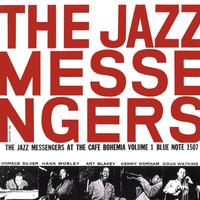
Music Matters (Blue Note) LPs
The Jazz Messengers - At The Cafe Bohemia Volume 1 - AMMJ 1507
180-gram double LP
Cut at 45 RPM, gatefold jacket
Mastered by Kevin Gray and Steve Hoffman
For Art Blakey's Jazz Messengers, it all began in 1955. One could trace the beginnings of hard bop to the underrated classic recordings that Blakey and Horace Silver made with Miles Davis in the early 1950s, and there was an important pre-Messengers quintet that they had with Clifford Brown and Lou Donaldson in 1954. But it was the 1955 group which debuted on the Horace Silver and the Jazz Messengers album that really launched both Blakey's band and the Blue Note label's commitment to recording the most exciting hard bop recordings ever heard.
A few months later the same group, with Kenny Dorham and Hank Mobley, recorded two albums at New York's Café Bohemia, showing that not only was the music more durable than one record, but that it would result in dozens of superb gems. The excitement of both performing in a brand new group and creating new music can be heard throughout this dazzling LP, which contains the original versions of Dorham's "Minor's Holiday" and "Prince Albert." This was history in the making and the musicians knew it.
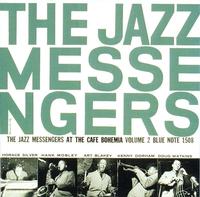
Music Matters (Blue Note) LPs
The Jazz Messengers - At The Cafe Bohemia Volume 2 - AMMJ 1508
180-gram double LP
Cut at 45 RPM, gatefold jacket
Mastered by Kevin Gray and Steve Hoffman
There are rare times on particularly special live recordings where one can truly feel the excitement of brilliant musicians creating new music. It is as if the musicians are not only one with the audience in the club but with those lucky enough to experience the music years later on the record. At The Café Bohemia, Vol. 2, which features the original version of the Jazz Messengers, is one of those times.
Not only is the sound quality superb, but Kenny Dorham, Hank Mobley, Horace Silver, Doug Watkins and Art Blakey are very inspired by the music, the audience, and the thrill of playing with each other. Whether jamming the blues on "Sportin' Crowd," digging deep into their own souls on "Like Someone In Love," or creating intense and passionate Afro-Cuban jazz on Mobley's "Avila and Tequila," this is music for the ages. Fans of hard bop, the Blue Note label, and straight ahead jazz in general will simply have to own this.

Music Matters (Blue Note) LPs
Gil Melle - Patterns In Jazz - AMMJ 1517
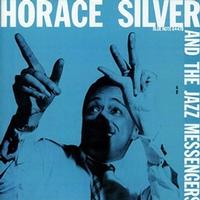
Music Matters (Blue Note) LPs
Horace Silver and The Jazz Messengers - Horace Silver And The Jazz Messengers - AMMJ 1518
180-gram vinyl, double LP set cut at 45 RPM and pressed at RTI
Remastered from the original Rudy Van Gelder Blue Note master tapes!
Kenny Dorham on trumpet, Hank Mobley on tenor saxophone, Doug Watkins on bass and Art Blakey on drums are the Jazz Messengers supporting Horace Silver playing piano on tunes like "Creepin' In," "To Whom it May Concern" and "Doodlin" to name three of seven tunes written by Silver for this, the first Jazz Messengers sessions recorded by Rudy Van Gelder. This is the seminal album, originally released in 1955, that gave birth to the Blue Note sound, to Art Blakey and The Jazz Messengers and to the Horace Silver Quintet. Shifting be-bop into an earthier, more blues-gospel orbit connected with audiences and forged the direction that hard bop would take for years to come!
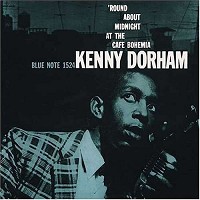
Music Matters (Blue Note) LPs
Kenny Dorham - 'Round About Midnight At the Cafe Bohemia - AMMJ 1524
On May 31, 1956, a very inspired night at the legendary Café Bohemia, the great trumpeter Kenny Dorham was featured with his working quintet, which included pianist Bobby Timmons (three years before he found fame with Cannonball Adderley), and the unsung but brilliant tenor-saxophonist J.R. Monterose. With guitarist Kenny Burrell being the special guest, the results not only define hard bop of the period but show why both the music and the trumpeter were so special. One of the most important leaders of the second generation of beboppers, Kenny Dorham played with both the Dizzy Gillespie big band and the Charlie Parker Quintet. While he learned directly from the masters, he was never content to merely ride on their coat tails and he developed into one of the pacesetters of hard bop. During 1955-63 Dorham recorded quite a few gems for Blue Note but At The Bohemia is very special. To hear the distinctive trumpeter playing his heart out on his features "Who Cares" and "Autumn In New York" is to eavesdrop on jazz history.
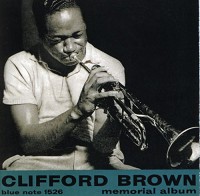
Music Matters (Blue Note) LPs
Clifford Brown - Memorial Album - AMMJ 1526
From the very beginning of his brief career, it was obvious that Clifford Brown was one of the greatest trumpeters of all time. The music on the Clifford Brown Memorial Album features Brownie in 1953 on his first jazz recordings. Even if he had only recorded the music on this release, Brown would have been considered an immortal. Five songs match him with Lou Donaldson and Elmo Hope and these not only include his brilliant solos on "Brownie Speaks" and Hope's catchy "De-Dah" but a mature ballad statement on "You Go To My Head." Brown was building on the legacy of Fats Navarro while challenging Dizzy Gillespie's position as modern jazz's top trumpeter, and Brownie was only 22. The other half of this remarkable release has Brown in a sextet with Art Blakey and John Lewis, ripping into "Cherokee" (Charlie Parker would have been proud) and "Wail Bait" while caressing "Easy Living." His large beautiful tone, mastery of bebop and remarkable technique made Brown a giant from the start. Listen to the Clifford Brown Memorial Album and hear where Lee Morgan, Freddie Hubbard and Woody Shaw came from.
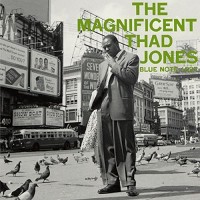
Music Matters (Blue Note) LPs
Thad Jones - The Magnificent Thad Jones - AMMJ 1527
Thad Jones made such a strong impact in his career as an arranger-composer and a big band leader that it is sometimes forgotten just how great and distinctive a trumpet player he was. After emerging from the Detroit jazz scene, Jones was a member of Count Basie's orchestra during 1954-63. However Jones was always a much more advanced player than was needed in Basie's band and he really emerged as an innovative improviser during his own sessions. The Magnificent Thad Jones, recorded in 1956, more than lives up to its name. Heading an all-star group that includes pianist Barry Harris (who was making his recording debut), Jones is superb throughout. He reprises and extends his famous solo on "April In Paris" (creating a very haunting rendition), his heated choruses on "If I Love Again" are driven by Max Roach, he creates heartfelt (and sometimes heartbreaking) statements on ballads and digs into the lengthy "Thedia." At no point during this memorable set does Thad Jones sound like anyone but himself, and he creates music for the ages on what is arguably the most lyrical of all Blue Note recordings.
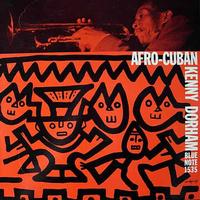
Music Matters (Blue Note) LPs
Kenny Dorham - Afro-Cuban - AMMJ 1535
One of the truly great trumpeters, Kenny Dorham had his own sound, was a skilled songwriter and was a first-rate talent scout who is credited with discovering Joe Henderson. One of the early beboppers, he perfectly led the way to hard bop in both his playing and his writing. Dorham recorded a series of exciting albums for Blue Note. Afro-Cuban was the first and one of the most stirring.
Dating from 1955, its mixture of Latin music and hard bop was ahead of its time. Using such notables as Hank Mobley, Horace Silver, J.J. Johnson and Art Blakey (whose drumming is dazzling throughout) plus percussionist Patato Valdes, Dorham contributes memorable originals, colorful arrangements that perfectly set up the solos, and his distinctive trumpet. Kenny Dorham, who plays with passion and intensity throughout this set, leads the all-star group through such numbers as "K.D.'s Motion," "Minor's Holiday" and the mambo of "Basheer's Dream." Even the set's only ballad, "Lotus Flower," is just barely restrained enough to keep the ensemble from exploding. This album will raise the temperature in any room by at least five degrees.
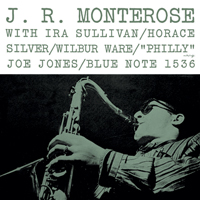
Music Matters (Blue Note) LPs
J.R. Monterose - J.R. Monterose - AMMJ 1536
J.R. Monterose's first session as a leader was a thoroughly enjoyable set of swinging, straight-ahead bop that revealed him as a saxophonist with a knack for powerful, robust leads in the vein of Sonny Rollins and Coleman Hawkins. With a stellar supporting group of pianist Horace Silver, trumpeter Ira Sullivan, bassist Wilbur Ware and drummer "Philly" Joe Jones, Monterose has recorded a set of bop that swings at a measured pace and offers many delightful moments. Throughout the session, Monterose sounds vigorous, whether he's delivering hard-swinging solos or waxing lyrical. With his bluesy vamps and soulful solos, Silver is equally impressive, while Sullivan's spotlights are alternately punchy and skilled; similarly, the rhythm section is tight, letting the music breathe while keeping the groove. In fact, the quality of the music is so strong, J.R. Monterose qualifies as one of the underappreciated gems in Blue Note's mid-'50s catalog. - Stephen Thomas Erlewine
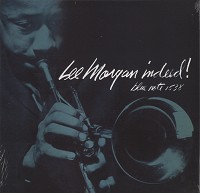
Music Matters (Blue Note) LPs
Lee Morgan - Indeed! - AMMJ 1538
Every genre has its prodigies. Jazz had Lee Morgan. At 18, Morgan was already a mature improviser with a sound and a confident style of his own. While influenced by Clifford Brown who died just a few months before Morgan recorded his debut album, Morgan was rapidly becoming one of the great hard bop trumpeters, filling the huge vacuum left by Brown's absence. He holds his own with altoist Clarence Sharpe and an all-star rhythm section that includes Horace Silver and Philly Joe Jones.
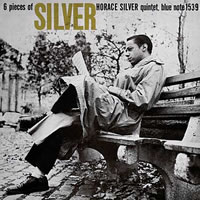
Music Matters (Blue Note) LPs
Horace Silver Quintet - 6 Pieces of Silver - AMMJ 1539
180-gram vinyl
This is the album that launched the Horace Silver Quintet. As a pianist, songwriter and bandleader, Horace Silver recorded quite a few superb sessions during his many years on Blue Note. His ability to write and improvise memorable melodies while infusing bebop with the blues epitomized soul jazz. Six Pieces Of Silver is his earliest gem. With Donald Byrd and Hank Mobley in his quintet, Silver debuts six new compositions.
While "Señor Blues" became a hit and "Cool Eyes" was well known, each of the songs (which includes "Virgo" and "Shirl") rewards repeated listenings. The soloists are inspired by the fresh repertoire, Silver's playing is full of wit and soul, and on this record, the famous sound of the Horace Silver Quintet is heard for the first time.
Like all Music Matters Jazz releases, this audiophile vinyl reissue is mastered from the original analog tape and pressed on 180-gram virgin vinyl at RTI in Camarillo, CA. The highest quality gatefold cover features original session photography on the inside.
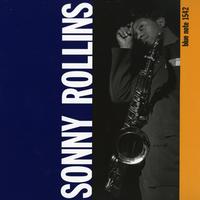
Music Matters (Blue Note) LPs
Sonny Rollins - Vol. 1 - AMMJ 1542
After several incredible dates for Prestige, Rollins moved over to Blue Note to cut a series of studio and live recordings; while not as groundbreaking as his earlier work, the albums still stand out among the many hard bop releases of the day. Upon listening to this, his fine debut for the label, not to mention classics like Saxophone Colossus and Sonny Rollins Plus Four, one almost takes for granted the tenor giant's ability to reel off a nonstop flow of breathtaking solo lines while keeping an overall thematic structure intact.
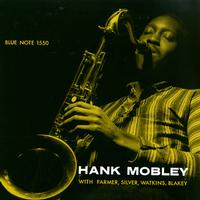
Music Matters (Blue Note) LPs
Hank Mobley Quintet - Hank Mobley Quintet - AMMJ 1550
Mobley and Art Farmer are backed by the original Jazz Messengers rhythm section - Horace Silver, Doug Watkins and Art Blakey - on this March 8, 1957 masterpiece. The album offers two Mobley classics in the soulful, swinging "Funk In Deep Freeze" and his gorgeous ballad "Fin de L'Affaire."
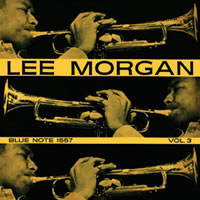
Music Matters (Blue Note) LPs
Lee Morgan - Volume 3 - AMMJ 1557
With a backing band comprised of GiGi Gryce, Benny Golson, Wynton Kelly, Paul Chambers and Charlie Persip, Lee Morgan trumpets his way through one of the famed and highly desirable 1500 series Blue Note records.
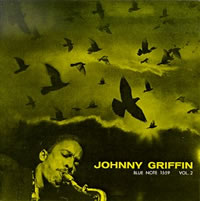
Music Matters (Blue Note) LPs
Johnny Griffin - A Blowin' Session - AMMJ 1559
The 1950s was the golden age of the recorded jam session. Although jams had been part of jazz since at least the 1920s, the rise of the LP meant that in the 1950s recordings were no longer limited to just three minutes apiece. Whether it was the Norman Granz jam sessions and his live Jazz at the Philharmonic concerts, or a sense of jam sessions led by Gene Ammons and Buck Clayton, musicians were finally free to stretch out and challenge each other on records. Of all of the jams, Johnny Griffin's A Blowing Session has a special place in jazz history. It is the only time that Griffin, John Coltrane and Hank Mobley met up on record. Although they all played tenor, each of their sounds was distinctive and quite different from each other on this 1957 set. Griffin is a powerhouse, able to play very fast lines with passion and brilliance. Coltrane is a searching innovator, pushing ahead and constantly coming up with new ideas. Mobley, who could have been easily overshadowed by the other two, wisely chose to play the opposite of the other tenors, leaving more space and creating melodic lines that are full of subtle surprises. With trumpeter Lee Morgan also contributing some firey ideas and the all-star rhythm section never letting the music coast, the three tenors created a jam session classic and one of the most exciting recordings of the decade.

Music Matters (Blue Note) LPs
Horace Silver - The Stylings of Silver - AMMJ 1562
Over his 25-year tenure on Blue Note, pianist Silver employed some great horn men to record with but arguably none blended better with his arranging than the group he assembled for this May 1957 session. Hank Mobley's tenor and Art Farmer's trumpet become the right and left hands to Silver's body of work and set a standard for small-ensemble writing and playing. No slouches themselves, Teddy Kotick's bass and Louis Hayes' drum work help produce a stellar collection including a version of "Home Cookin'" that became a jazz classic.
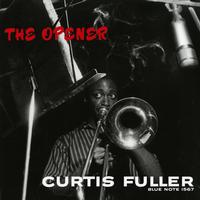
Music Matters (Blue Note) LPs
Curtis Fuller - The Opener - AMMJ 1567
The Opener is trombonist Curtis Fuller's first album for Blue Note and it is a thoroughly impressive affair, working with a quintet featuring tenor saxophonist Hank Mobley, pianist Bobby Timmons, bassist Paul Chambers and drummer Art Taylor, Fuller runs through a set of three standards - "A Lovely Way To Spend An Evening," "Here's To My Lady," "Soon" - two originals and an Oscar Pettiford-penned calypso. The six songs give Fuller a chance to display his warm, fluid style in all of its variations.
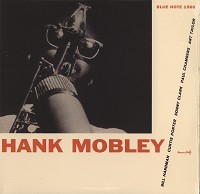
Music Matters (Blue Note) LPs
Hank Mobley - Hank Mobley - AMMJ 1568
Hank Mobley's precise playing, harmonic, rhythmic and melodic inventiveness, expressive tone and laid-back delivery made him one of the leading tenor saxophonists of the hard bop movement. Critic Leonard Feather nicknamed Mobley "the middleweight champion of the tenor" because his sound was lighter than Sonny Rollins but heavier than Lester Young's. A prolific recording artist, Mobley was associated with Blue Note during three distinct periods from 1954-70 and left a legacy of 25 albums featuring a veritable Who's Who of Modern Jazz – on this session he's backed by Bill Hardman on trumpet, Curtis Porter on alto and tenor sax, Sonny Clark on piano, Paul Chambers on bass and Art Taylor on drums.
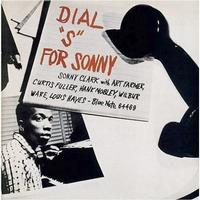
Music Matters (Blue Note) LPs
Sonny Clark - Dial S For Sonny - AMMJ 1570
Numbered, limited edition 180-gram double LP
Cut at 45 RPM, gatefold jacket
Sonny Clark could be thought of as a jazz comet. He appeared in the jazz world from almost out of nowhere in 1957, he flashed brightly for five years, and then he left when he was just 31. Clark's brilliance was so powerful that every note he played is sought after by hard bop collectors. But even among his many classic recordings, Dial S For Sonny is something very special. His first studio album as a leader, Dial S For Sonny finds Clark bursting with youthful enthusiasm and his rapidly emerging talent while overflowing with ideas. He not only holds his own with Art Farmer, Curtis Fuller and Hank Mobley but absolutely steals the show. Clark shows what he learned from Bud Powell and then takes the music in surprising directions, creating stirring music on such timeless numbers as "Bootin' It," "Sonny's Mood" and "Shoutin' On A Riff." This dazzling set, heard for the first time in impeccable sound, is not easily forgotten.
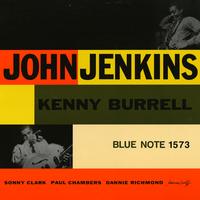
Music Matters (Blue Note) LPs
John Jenkins & Kenny Burrell - John Jenkins with Kenny Burrell - AMMJ 1573
Altoist John Jenkins, in his second session as a leader, is joined by guitarist Kenny Burrell, pianist Sonny Clark, bassist Paul Chambers and drummer Dannie Richmond. Jenkins easily keeps up with his better-known sidemen through a program of bop jazz with plenty of emotion and creativity.
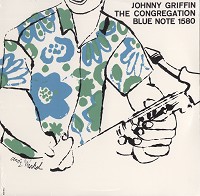
Music Matters (Blue Note) LPs
Johnny Griffin - The Congregation - AMMJ 1580
Johnny Griffin could play as rapidly as anyone but there was more to the great tenor than just speed. His warm and emotional tone was distinctive (becoming an influence on Rahssan Roland Kirk), he could play chorus after chorus of inventive and fresh ideas, and he was unbeatable in a saxophone battle. Griffin even battled Eddie "Lockjaw" Davis (who had a much tougher tone) to a dead heat in nightly battles when they co-led a quintet in the 1960s. The Congregation is a superb outing full of heat, fire and intensity, with time out for thoughtful ballads. Teamed with pianist Sonny Clark in a quartet, Griffin is quite exuberant on the lengthy sanctified title cut which is reminiscent of the jubilant Horace Silver tune "The Preacher." He tears into "It's You Or No One" and puts plenty of honest feeling into the other songs which are taken at a more moderate pace. Johnny Griffin, like the very best jazz musicians, meant every note that he played and his solos were full of constant surprises, making his best recordings timeless. The Congregation is one of his finest albums.
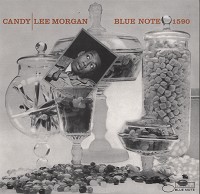
Music Matters (Blue Note) LPs
Lee Morgan - Candy - AMMJ 1590
This classic Blue Note session finds trumpeter Morgan not having to battle other horns, just front-and-center with an all-star trio behind him. It was his only quartet recording as a leader for Blue Note. The exquisite Sonny Clark on piano, Doug Watkins' solid bass and the ever-tasteful Art Taylor behind the drums complete these sessions recorded in Hackensack by RVG in November of 1957 and February of 1958. Loaded with standards, it's a hard-bop masterpiece that both swings and shows the ballad side of one of the defining young trumpeters from the late 50s to the early 60s.
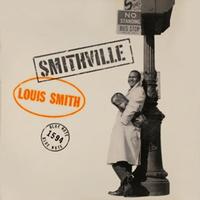
Music Matters (Blue Note) LP
Louis Smith - Smithville - AMMJ 1594
Trumpeter Louis Smith, an amazing soloist and technician, left jazz for music education in late-1958, but not before making two albums for Blue Note and joining Horace Silver's quintet. Leading an exceptional quintet with Charlie Rouse, Sonny Clark, Paul Chambers and Art Taylor, Smith blazes his way through excellent performances.
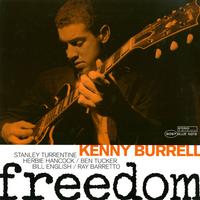
Music Matters (Blue Note) LPs
Kenny Burrell - Freedom - AMMJ 3057
Throughout his career, Kenny Burrell has become well known for his taste, melodic style and attractive sound on the guitar. Burrell, who was part of the Detroit jazz scene before moving to New York in the mid-1950s, early on signed with Blue Note where he made most of the greatest recordings of his career. Freedom is one of the most obscure of Burrell's Blue Note recordings. It was originally only released in Japan and has rarely reappeared since. Burrell, while not abandoning his melodic approach on ballads, is quite heated on the faster material and very soulful throughout, interacting with such notables as Stanley Turrentine, Herbie Hancock and Hank Jones. Freedom is a true rarity and a long-lost gem.
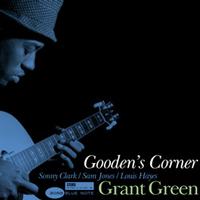
Music Matters (Blue Note) LPs
Grant Green - Gooden's Corner - AMMJ 3058
180-gram vinyl, double LP set cut at 45 RPM and pressed at RTI
Remastered from the original Rudy Van Gelder Blue Note master tapes!
This 1961 Blue Note date from Grant Green finds the jazz guitar legend leading a quartet rounded out by Sonny Clark (piano), Sam Jones (bass) and Louis Hayes (drums). In addition to his two originals "Gooden's Corner" and "Two for One," the master interpreter and company run through a strong selection of standards such as "Moon River," "On Green Dolphin Street" and "Count Every Star," highlighted throughout by the exemplary give and take between Green and Clark!
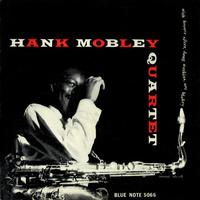
Music Matters (Blue Note) LPs
Hank Mobley Quartet - Hank Mobley Quartet W/Outakes - AMMJ 5066
Hank Mobley was not just a master of hard bop but one of its founders. With the Jazz Messengers and Horace Silver's Quintet, he helped to define the role of the tenor in hard bop, and his series of Blue Note recordings made him an influential force for 15 years. Originally a pianist, Mobley switched to tenor when he was 16, and by the early 1950s was a member of Max Roach's quartet. Mobley was already a masterful player. Joined by both Horace Silver and Art Blakey, Mobley performs some of his best early material (including "Hank's Prank," "Avila and Tequilla" and "Just Coolin'") and sets the standard for hard bop tenors of the next decade. The Hank Mobley Quartet is one of the most important early hard bop albums, a gem that shows why Mobley would be a regular Blue Note artist for the next 15 years.
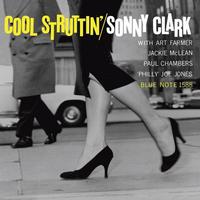
Music Matters (Blue Note) LP
Sonny Clark - Cool Struttin' - AMMJ 81588
Winner of a Gruvy Award, chosen by AnalogPlanet's editor, Michael Fremer, for vinyl records that are musically and sonically outstanding and are also well mastered and pressed. Read more, here.
Considered one of the great young pianists of the mid-to-late 1950s, Sonny Clark was practically the house pianist at Blue Note during 1957-62 before his tragically early death in 1963 when he was just 31. He began his career playing and recording with Teddy Charles and Wardell Gray in the early 1950s. Inspired by Bud Powell, he made a particularly strong impression during his period with clarinetist Buddy DeFranco's group. He also worked with Dinah Washington, Serge Chaloff and Sonny Criss in addition to leading his own trio.
But he is most famous for his work for Blue Note In addition to leading seven albums for the label, Clark was on many sessions as a sidemen, uplifting every date with his adventurous and swinging playing. His playing was full of joyful discoveries, constant swing, and an optimistic creativity that was indescribable and quite infectious. Cool Struttin,' the pianist's most famous and rewarding album, features Sonny Clark in a quintet with altoist Jackie McLean, trumpeter Art Farmer, bassist Paul Chambers and drummer Philly Joe Jones.
On this 1958 gem, Clark is featured on four lengthy performances, including Miles Davis "Sippin' At Bells" and the exotic "Deep Night." The music is filled with magical moments where the five musicians seem to think and create like one. The greatest jazz performances include moments like those heard on "Cool Struttin'" where the music has a life of its own beyond the individual players. The more one plays this superb album, the more it is obvious that this is one of the truly essential Blue Note recordings.
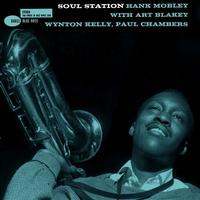
Music Matters (Blue Note) LP
Hank Mobley - Soul Station - AMMJ 84031
Music Matters Blue Note reissues from the original master tapes
Edition limited to 2,500 copies
Winner of a Gruvy Award, chosen by AnalogPlanet's editor, Michael Fremer, for vinyl records that are musically and sonically outstanding and are also well mastered and pressed. Read more, here.
Soul Station is Hank Mobley's acknowledged masterpiece. Mobley's hot, brilliantly constructed solos have a smooth sound and an easy feel. With Miles Davis at the time, Mobley is joined by band mates Wynton Kelly and Paul Chambers along with a magnificent Art Blakey. A true classic.
This album features Hank Mobley at the peak of his powers, taking lengthy solos full of passion and drive, balancing exciting ideas with a thoughtful approach. His four originals include his most famous composition, "This I Dig Of You", which he squeezes for every ounce of its expressive power. Hank plays with heartbreaking lyricism on the two standards "If I Should Lose You and "Remember" and creates masterful statements throughout this essential set. If proof were ever needed of Hank Mobley's greatness, Soul Station is perfect evidence.
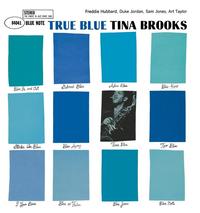
Music Matters (Blue Note) LP
Tina Brooks - True Blue - AMMJ 84041
Winner of a Gruvy Award, chosen by AnalogPlanet's editor, Michael Fremer, for vinyl records that are musically and sonically outstanding and are also well mastered and pressed. Read more, here.
Tina Brooks' passionate full sound and forward-looking style, along with his exceptional compositional gifts, made him a powerful force during his prime years. Brooks' star burned with intense brightness for a brief period before disappearing in the same tragic manner of too many other young bop players of the time. Even many of the most dedicated jazz fans missed Brooks' recordings, the best of which were simply extraordinary.
A soulful hard bop tenor-saxophonist with an original sound and fresh ideas of his own, Brooks (1932-74) had a brief life. He started out playing with Amos Milburn and Lionel Hampton. The prime of his career was during 1958-61 when he recorded four albums for Blue Note, including his most significant recording, True Blue. True Blue has long been one of the most sought-after Blue Notes of all time. Recorded in June, 1960, True Blue showcases Brooks along with the young firebrand trumpeter Freddie Hubbard (in one of his earliest sessions), pianist Duke Jordan, bassist Sam Jones and drummer Art Taylor in a set of highly inventive originals. True Blue gives listeners plenty of proof of Tina Brooks' majestic sound and soulful writing prowess. For many aficionados of the Blue Note label, True Blue is the very essence of the Blue Note sound and feel.
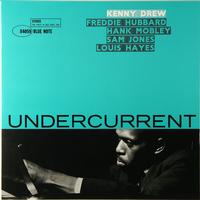
Music Matters (Blue Note) LP
Kenny Drew - Undercurrent - AMMJ 84059
Winner of a Gruvy Award, chosen by AnalogPlanet's editor, Michael Fremer, for vinyl records that are musically and sonically outstanding and are also well mastered and pressed. Read more, here.
180-gram gatefold LP limited to 2,500 copies
"Kenny Drew's seventh recording as a leader is significant for many reasons, not the least of which that it is one of the finest Blue Note hard bop statements in either of their catalogs. Teamed with rising young star, trumpeter Freddie Hubbard, and the wonderful tenor saxophonist Hank Mobley fresh off stints with Donald Byrd and Art Blakey, Drew is joining the ranks of the premier mainstream jazz pianists just prior to moving permanently to Europe. He's a complementary piece of the puzzle as a player, but stirs the drink as the composer of all of these very fine hard bop vehicles. Bassist Sam Jones and especially drummer Louis Hayes contribute mightily to the beats that keep Hubbard and Mobley flying on this recording, whose energy runs contrary to the more subtle, suggestive title." — AllMusic.com
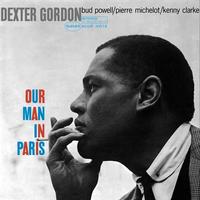
Music Matters (Blue Note) LP
Dexter Gordon - Our Man In Paris - AMMJ 84146
Mastered from the original analog tapes
Edition limited to 3,500 copies
In 1963, the year when Our Man In Paris was recorded, Dexter Gordon turned 40 and moved to Europe for what would be a dozen-year stay. Gordon had been the first important bebop tenor-saxophonist and a giant of Jazz since 1945. After some time off the scene in the '50s, he was signed to Blue Note. He returned with full force, playing with power, wit and his trademark huge sound, creating one masterpiece after another. On Our Man In Paris, he is clearly inspired by the playing of the innovative bebop pianist Bud Powell, himself at the peak of his powers, bassist Pierre Michelot and the pioneering bop drummer Kenny Clarke. Gordon plays chorus after chorus of fresh, swinging ideas on such tunes as "Scrapple From The Apple," "Broadway" and "A Night In Tunisia," making these Jazz standards sound as if they were written for him. This blazing bebop date is a constant joy.
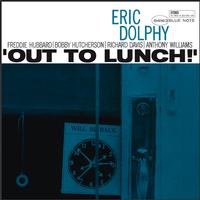
Music Matters (Blue Note) LP
Eric Dolphy - Out To Lunch - AMMJ 84163
Recordings from the original master tape
Edition limited to 3,500 copies
In the history of jazz, Eric Dolphy was the first innovator to develop a strikingly original yet different voice on three instruments: alto-sax, flute and bass clarinet. When Dolphy burst upon the New York scene in 1960, he already had over a decade of experience. Originally influenced most by Charlie Parker, Dolphy was part of Los Angeles' Central Avenue scene in the late 1940s.
Virtually nothing was heard of him on records in the 1950s before he joined the Chico Hamilton Quintet in 1958, but by then he was ready for the big leagues. His associations with Charles Mingus and John Coltrane, along with his series of dynamic recordings for Prestige, gave him attention. His speech like solos on alto (which featured wide interval jumps), his pioneering of the bass clarinet as a solo instrument, and his flute playing inspired by the sound of birds marked him as a major innovator and a true original. His playing was consistently emotional, often-jubilant and always full of passion.
Out To Lunch from 1964, his final studio album before his premature death at the age of 36, has long been considered one of his greatest statements. Not only is Dolphy heard at his most explorative and inventive on each of his instruments but he contributes five very original compositions including an unusual Thelonious Monk tribute ("Hat And Beard") and the eccentric "Straight Up And Down." Utilizing an all-star group that features Freddie Hubbard, Bobby Hutcherson, Richard Davis and a teen aged Tony Williams, Dolphy maps out a future for jazz that he would never live to experience. One can hear bits of such future greats as Oliver Lake, Anthony Braxton, Bennie Maupin, David Murray and James Newton in Dolphy's playing and writing but, truth be told, there was only one Eric Dolphy. Out To Lunch is his last masterpiece.
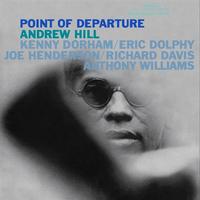
Music Matters (Blue Note) LP
Andrew Hill - Point Of Departure - AMMJ 84167
Edition limited to 3,500 copies
Point Of Departure is not only one of the greatest jazz recordings of 1964, but of all time. The stellar lineup (Eric Dolphy, Kenny Dorham, Joe Henderson, Richard Davis and a teen aged Tony Williams) was given a set of rich three-horn compositions by the brilliant pianist and composer Andrew Hill.
This group created Point of Departure, an acknowledged modern day classic and one of Blue Notes most extraordinary recordings. Andrew Hill was a quiet revolutionary, but he was every bit as original in his conception as Thelonious Monk. Hill extended, twisted and turned hard bop into his own very fresh and personal music. Like Eric Dolphy, Hill spawned few imitators. His conception was so pure, and so unique, both as a player and as an arranger-composer that nearly a half century later, Point Of Departure remains a brilliant touchstone of modern jazz.
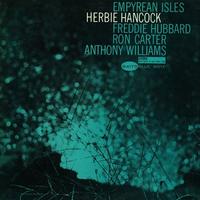
Music Matters (Blue Note) LP
Herbie Hancock - Empyrean Isles - AMMJ 84175
Mastered from the original analog tapes
Edition limited to 3,500 copies
From Music Matters. Throughout his career, Herbie Hancock has always pushed the boundaries, exploring a wide variety of music while bringing his flair to every setting. His Blue Note albums of the 1960's ranged from post bop to Latin jazz (he penned "Watermelon Man"), straight ahead to free form.
Empyrean Isles, recorded when Hancock was 24 and a new member of the Miles Davis Quintet, features the pianist pushing at the boundaries of hard bop, creating fresh, new music. In a quartet with Freddie Hubbard, Ron Carter and Tony Williams, Hancock shows that he was familiar with both avant-garde jazz and groovin' R&B. His four compositions include the original and most exciting version of "Cantaloupe Island" and the swingingly unpredictable "One Finger Snap." Empyrean Isles brims with the power and adventure of the best 1960s jazz, pushing ahead into uncharted territory.
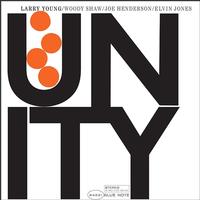
Music Matters (Blue Note) LP
Larry Young - Unity - AMMJ 84221
One of the finest Blue Note jazz titles EVER!
Cut at 33 1/3 RPM by Kevin Gray at Cohearent Audio from the original Rudy Van Gelder Blue Note master tapes
Pressed on 180-gram virgin vinyl LP by RTI
Top quality gatefold packaging with laminated covers and high-quality session photos
By the time he recorded what is universally regarded as his finest album in 1964, Larry Young had developed his own innovative style on Hammond B-3 organ and had proved that the instrument could be used for so much more than soul jazz. He was light years ahead of his contemporaries, and fully established himself as the most forward thinking B-3 organ player of the Coltrane era.
Teaming with a superb cast consisting of trumpet sensation Woody Shaw (who contributed three of the six selections), Joe Henderson and Elvin Jones, Larry Young inspires each of these young giants to some of the finest performances of their lives. Unity, which still sounds as contemporary as the day it was recorded, is an essential post-bop classic!
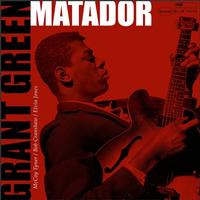
Music Matters (Blue Note) LP
Grant Green - Matador - AMMJ 84442
Gatefold 180-gram LP limited to 3,500 copies
During the first half of the 1960s, Grant Green was the house guitarist at Blue Note. His single-note lines had the power of a saxophonist, he displayed his own brand of soul, and he was so versatile that he was a perfect fit with soulful organ combos, post bop groups and all-star straight-ahead bands, even recording Latin music, spirituals and a Western-themed album.
For 1964's Matador, Green showed a lot of courage, performing "My Favorite Things" in a quartet with McCoy Tyner and Elvin Jones. Any other guitarist would sound foolhardy in that setting, but Green came up with his own ideas, creating a different spin on John Coltrane's trademark song. It is proof that on the guitar, Green was on the level of a McCoy Tyner and an Elvin Jones on their instruments. He was an innovator who blazed his own path, created music that had never been heard before, and always remained impossible to pin down as playing in only one style. Matador, which features Grant Green with his peers, is one of his most vital and timeless recordings.
Musicians:
Grant Green, guitar
McCoy Tyner, piano
Bob Cranshaw, bass
Elvin Jones, drums
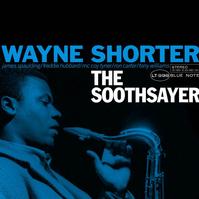
Music Matters (Blue Note) LPs
Wayne Shorter - The Soothsayer - AMMJ 988
One of the most innovative players and writers to emerge during the 1960s, Wayne Shorter's string of Blue Note albums were the finest of his career. The Soothsayer, which was not originally released until the late 1970s, would have been considered one of the top jazz albums of 1965 if it had come out at that time. While Shorter plays in a three-horn sextet (with inspired solos by Freddie Hubbard and James Spaulding) that is similar in instrumentation to the Jazz Messengers, his jazz home during 1959-64, his music is much more advanced and extremely original. No one else could have written such tunes as “Lost,” “Angola” and “Lady Day.” Shorter's playing and logic, like that of Thelonious Monk, follows its own logic. While this music is unique and futuristic, Wayne Shorter on The Soothsayer also points the way for modern jazz of the next 45 years. To say that he was ahead of his time would be a major understatement.
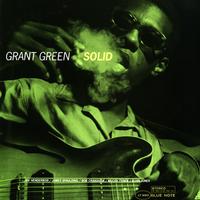
Music Matters (Blue Note) LP
Grant Green - Solid - AMMJ 990
After his untimely death in 1979, Blue Note published a number of Grant Green's previously unreleased '60s recordings. One of these astounding sessions is Solid, an energetic outing that finds Green leading a large ensemble, including Coltrane band members and Blue Note regulars. Green shows his mettle with fire and precision, his bright, clear tone cutting through the dense sonic backdrop.
 In-Stock Music Orders Over $99 SHIP FREE Within The Continental U.S.
In-Stock Music Orders Over $99 SHIP FREE Within The Continental U.S.







 Login
Login
 My Account
My Account
 Cart
Cart Wishlist
Wishlist
 Contact
Contact




